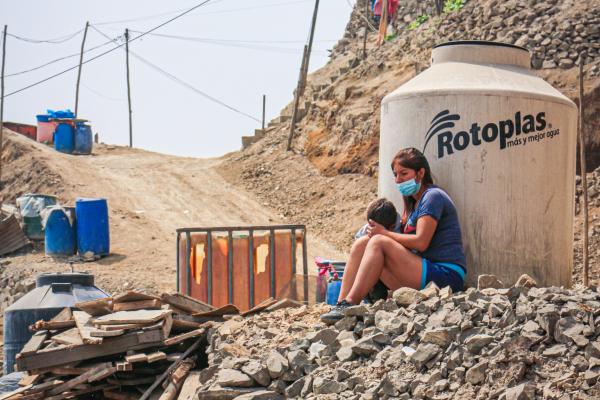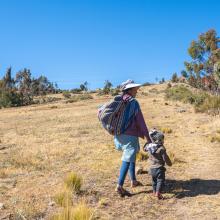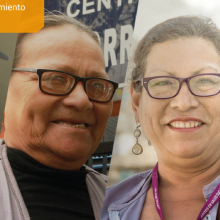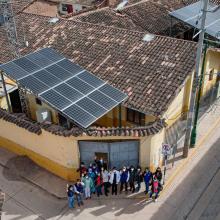In the district of Carabayllo, located north of Lima, a neighbor told that there are times when, after going to the market, she returns home and finds no water. “We wait two hours, three hours, but sometimes it comes back the next day,” she stressed.
Over a thousand kilometers away, in the district of Maras, located in the province of Urubamba, a mother said, “The waters are drying up, because the heat is burning and even the snow-capped mountains are drying up. Where are we going to get water from?”
Their testimonies, which tell of a harsh reality, are part of a baseline study of the maternal and child health situation led by Socios En Salud (SES), with the aim of identifying the needs of pregnant women and caregivers of children under ten years of age.
“We realized that health conditions have a lot to do with water insecurity due to climate change,” says Karen Ramos, head of SES’s Maternal, Child and Adolescent Health Program (SAMIA).
Although some consider the effects of this phenomenon to be distant, the baseline developed by SES, together with Harvard Public School, the Division of Global Health at Brigham and Women’s Hospital, among other research centers, shows that for many people living in highly vulnerable contexts it is a current and urgent problem.
The findings were presented this April at a conference organized by Harvard’s Radcliffe Institute in Boston (USA), where experiences were exchanged on water use and consumption among these communities, and ideas were proposed to improve access to safe water and reduce the consequences of climate change on the population.
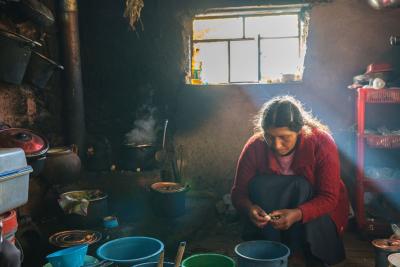
El distrito de Maras, en Cusco, es uno de los lugares donde Socios En Salud llevó a cabo su estudio de base para recoger las necesidades de salud materno infantinles ante el cambio climático.
The Needs in Carabayllo
Through its study, SES gathered information on perceptions of water insecurity and climate change from pregnant women, caregivers of children under ten, health professionals and community members.
Interviewees described direct impacts on water scarcity. “In the high areas they don’t have access and they buy water or use a cistern that they have to climb up the hill to a certain point, because beyond that it doesn’t reach,” explained one obstetrician.
They also pointed out that in their homes they store water in containers. However, its availability is unpredictable. And while some did not acknowledge the health footprint of climate change, others highlighted an increase in temperatures and droughts.
Some respondents even predicted that the effects of climate change will worsen, as extreme weather events directly affected riverine communities.
For this reason, most women expressed the need to learn about strategies to increase water saving. And is that health conditions related to this water insecurity are part of their concerns.
Among the diseases caused by water scarcity or poor water quality, they included poor hygiene, dermatological, gastrointestinal and respiratory ailments, especially in children. “Climate change causes coughs, colds, because of the humidity,” one participant maintained.
The risk of contracting dengue fever after the rains was also a point of interest during the study. Despite the high level of awareness of preventive practices, some community members still observe larvae even after taking measures.
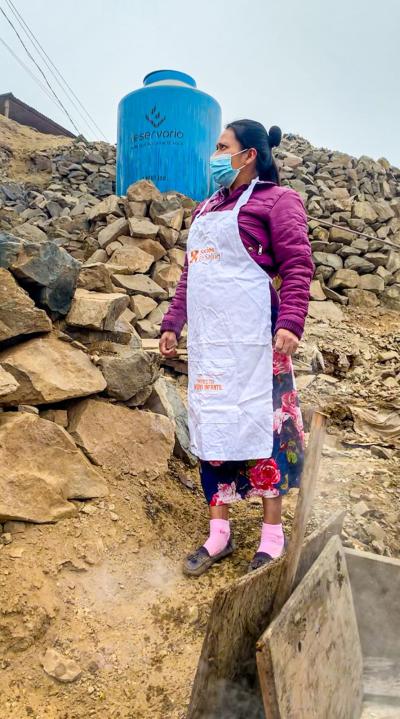
La escasez de agua es uno de los puntos críticos que debe enfrentar el distrito de Carabayllo frente a los efectos del cambio climático.
Anxiety over water scarcity in Maras
“In Cusco, [the effects of climate change] are felt in the soul, it’s today,” says Dr. Sonya Shin, associate professor at Harvard Medical School and physician associate in the Division of Global Health at Brigham and Women’s Hospital.
No wonder. In the Maras district, 80% of the women interviewed by Partners In Health presented symptoms of anxiety related to water scarcity. “We all feel worried. Imagine a few years from now, how is it going to be? Worse,” said one respondent.
Many mothers described feelings of worry, stress, and frustration related to daily struggles with water shortages. Water shortages have increased the burden on them, as they are the ones who must solve the day-to-day problems.
Water insecurity has also generated stress and frustration in children, who cannot play outdoors because they do not have water to wash themselves. This resource is prioritized for cooking instead of bathing, washing hands, cleaning the house and washing clothes.
“[The children] are stressed too, because we moms are charging them not to get dirty. If there is no water, how are you going to get dirty?” stated one of the mothers.
Another effect of climate change and water insecurity highlighted by interviewees was poor nutrition due to crop failure, reduced animal husbandry, and less income to buy diverse foods. They also expressed concerns about insufficient and inadequate diet, which can lead to anemia.
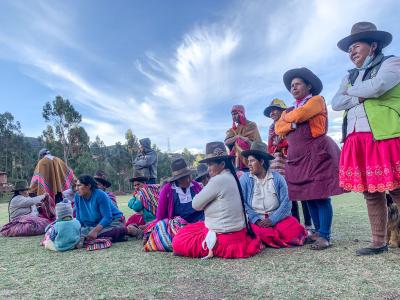
En Maras (Cusco), las madres atraviesan episodios de ansiedad debido a la incertidumbre de la falta de agua. Un problema que sus hijos perciben y también deben padecer.
Community-level responses
In its baseline study, Socios En Salud also aimed to seek community-level responses to the influence of climate change. Thus, in Carabayllo, a series of proposals were developed at the community level:
- Establish community-level water cooperatives with infrastructure, financial and regulatory management, carried out through community governance.
- Promote knowledge sharing and facilitate the adoption of water conservation and recycling measures.
- Provide support to families migrating from rural regions to facilitate access to health care and minimize water insecurity.
For their part, in Maras, women described water management practices that their community can implement to combat water insecurity:
- Recharge aquifers, such as afforestation with low-water-use species and spring cleaning.
- Use Andean ancestral knowledge, such as ccocha laccay and qqeuña planting, to conserve water sources. Some communities build domestic reservoirs to store rainwater.
- Organize community members to clean and protect springs in the face of the uncertainty faced by infrastructure projects.
